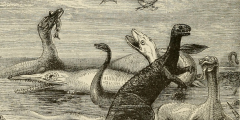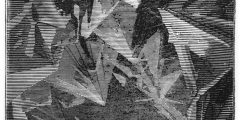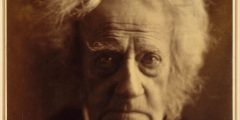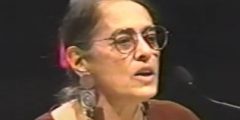‘The most important book I ever read’: Francis Crick and children’s encyclopaedias
July 18, 2025
Matthew Cobb has written a biography of Francis Crick (1916-2004), one of molecular biology’s foremost scholars. It will come out in November. While writing the book, he posted, as he does with every book he writes, little snippets of information on Bluesky along the way – letters, photos, passages of notes he couldn’t quite decipher, …
Science, stories and the secrets of survival
April 11, 2025
I recently read a post on Bluesky by Adam Roberts, a British science fiction and fantasy novelist that said: “MODERN MAGIC MAKES MANIFEST MERLIN’S MEDIEVAL MYSTERIES”. I was instantly hooked and found out that this is a nicely alliterative rendition of the original title of a press release announcing that “Fragments of a rare Merlin …
Contesting Earth’s History
April 3, 2025
This is a GUEST POST by Richard Fallon, a Postdoctoral Researcher at the Natural History Museum, London. Richard has studied interactions and overlaps between literature and science, focusing on the long nineteenth century and paying particular attention to the literary popularisation of dinosaurs. His current work examines transatlantic geoscience between the 1860s and the 1920s characterised by …
Fin-de-Siècle Youth Magazines and their Construction of Gendered Responses to Sickness
March 14, 2025
This is a post by SUSAN SUDBURY. Susan is a fifth-year honours student completing a Bachelor of Advanced Humanities at the University of Queensland, Australia, where she is studying an extended major in English Literature. I am here reposting with permission a blog post that she wrote as part of the Media and Epidemics project. …
Making mineralogy public: George Sand and Jules Verne
January 31, 2025
On 14 January, Richard Fallon, an expert on 19th/20th-century literature and science, posted on Bluesky: “More people ought to read George Sand’s 1864 romance Laura, Voyage dans le cristal: a delirious, phantasmagoric, mineralogical story that includes a trip to a prehistoric lost world at the North Pole”. I had read some stories by George Sand …
John Herschel: A snapshot of his adventures in photography
February 16, 2024
Sitting at home on a miserable day last week, I was reading a tweet, then a blog post by Stephen Case who wrote a book with my sort of title: Making Stars Physical: The Astronomy of Sir John Herschel. That post cheered me up, as I learned something new. I went to the kitchen to …
The Gmelin family: From chemistry to phlogiston and permafrost
May 12, 2023
I had Covid. I was lying in bed. I saw a tweet by Mark Carnal saying: “Historians of Biology. How on earth is Gmelin pronounced? I’ve not had to say it out loud before.” I am not a historian of biology but, as a German speaker, I was intrigued. So, I looked up the name …










